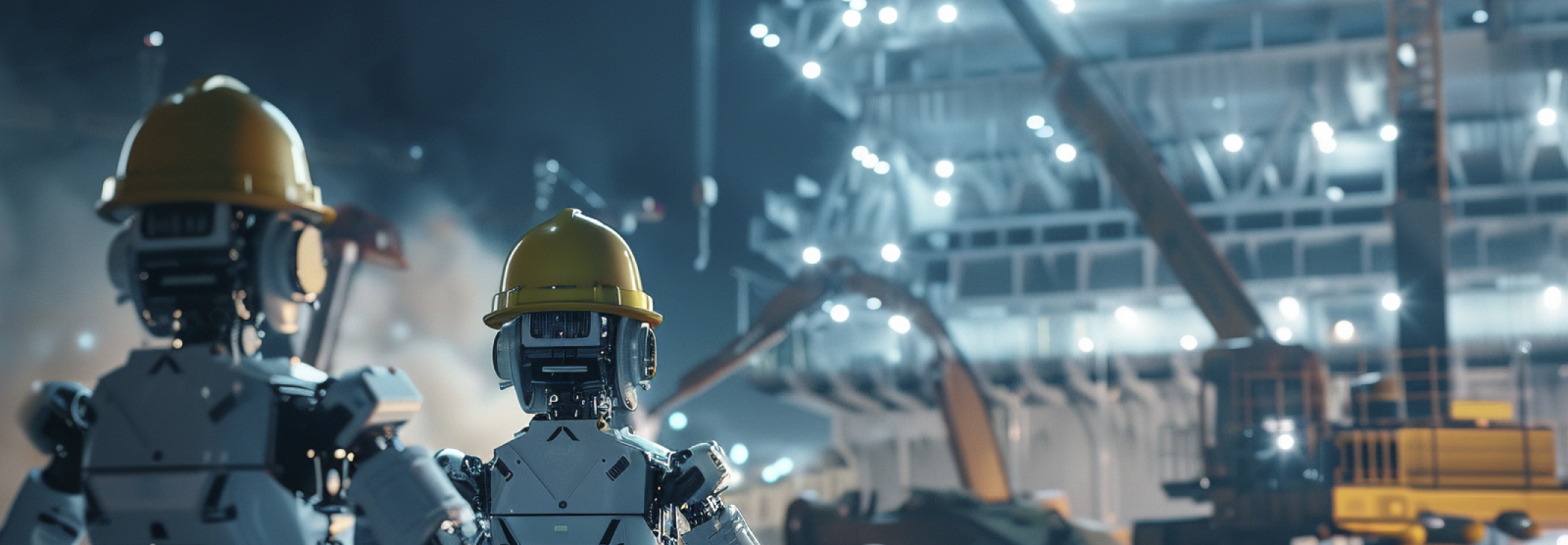Autonomous Construction Equipment

Revolutionizing the Engineering, Construction & Property Industry with Robotics and AI
Executive Summary
The global construction industry faces a $1.6T productivity gap, with labor shortages and inefficiencies delaying 70% of projects (McKinsey, 2023). Autonomous construction equipment—such as bricklaying robots, self-driving excavators, and AI-powered cranes—is transforming the sector by increasing productivity by 30-50%, reducing labor costs by 20-40%, and improving worksite safety by 60%. Companies like Built Robotics, Fastbrick Robotics (Hadrian X), and Komatsu are leading the charge, deploying machines that operate 24/7 with millimeter precision. This whitepaper explores how autonomous construction technology is reshaping project timelines, cost structures, and workforce dynamics.
Key Challenges in Traditional Construction
- Labor Shortages: 80% of contractors struggle to hire skilled workers (AGC, 2023)
- Safety Risks: Construction accounts for 21% of workplace fatalities (OSHA)
- Inefficiency: 30% of construction time is wasted on rework and delays
- High Costs: Labor constitutes 40-50% of total project expenses
- Sustainability Pressures: Construction generates 23% of global CO₂ emissions
AI & Robotics Solutions
- Bricklaying Robots
- Hadrian X (Fastbrick Robotics): Lays 1,000 bricks/hour vs. 500/day manually
- SAM100 (Construction Robotics): Semi-autonomous mason boosts productivity 3-5x
- Autonomous Excavators & Bulldozers
- Built Robotics: AI-guided machines perform GPS-excavation with ±1cm accuracy
- Komatsu SmartConstruction: Autonomous dozers reduce fuel use by 15%
- Self-Driving Concrete Pouring
- Doxel AI: Robots monitor and adjust concrete levels in real-time
- Drone-Based Surveying & Inspection
- Autel Robotics: Autonomous drones map sites 10x faster than manual surveys
- AI Crane & Heavy Lift Automation
- Liebherr’s AI Crane: Reduces human error in high-risk lifts
Outcomes & ROI
✔ 30-50% faster project completion
✔ 20-40% labor cost reduction
✔ 60% fewer worksite accidents
✔ 5-15% material waste reduction
✔ 24/7 operation (no shift limitations)
Future Technologies
- Swarm Robotics: Teams of small robots collaborating on complex tasks
- 3D Printing Integration: Autonomous bots + 3D printing for hybrid structures
- AI-Powered Predictive Maintenance: Machines that self-diagnose failures
- Human-Robot Collaboration (HRC): Exoskeletons + AI assistive tech
Industry Insights
- Fastbrick Robotics: Reduced bricklaying time by 90% in pilot projects
- Built Robotics: Deployed 100+ autonomous excavators in North America
- Komatsu: Autonomous dozers improved fuel efficiency by 20%
- Startups: Dusty Robotics (layout bots), Scaled Robotics (site monitoring)
Implementation Roadmap
|
Phase |
Key Actions |
|
Feasibility Study |
Assess site suitability and ROI |
|
Pilot Program |
Test 1-2 machines on controlled tasks |
|
Workforce Training |
Upskill operators in robotics/AI |
|
Full Deployment |
Integrate with BIM & project management |
|
Continuous Optimization |
AI learning from real-world data |
Conclusion
Autonomous construction equipment is no longer futuristic—it’s operational today, delivering measurable gains in speed, safety, and sustainability. Early adopters gain a competitive edge in bidding and project delivery, while reducing reliance on scarce labor. The next frontier is fully autonomous job sites, where human supervisors oversee AI-driven fleets.
Next Steps:
- Identify high-ROI use cases (bricklaying, excavation, surveying)
- Partner with robotics providers (Built Robotics, Fastbrick, Komatsu)
- Invest in workforce transition training
Contact Us:
✉ hi@adda.co.id | 🌐 www.adda.co.id
